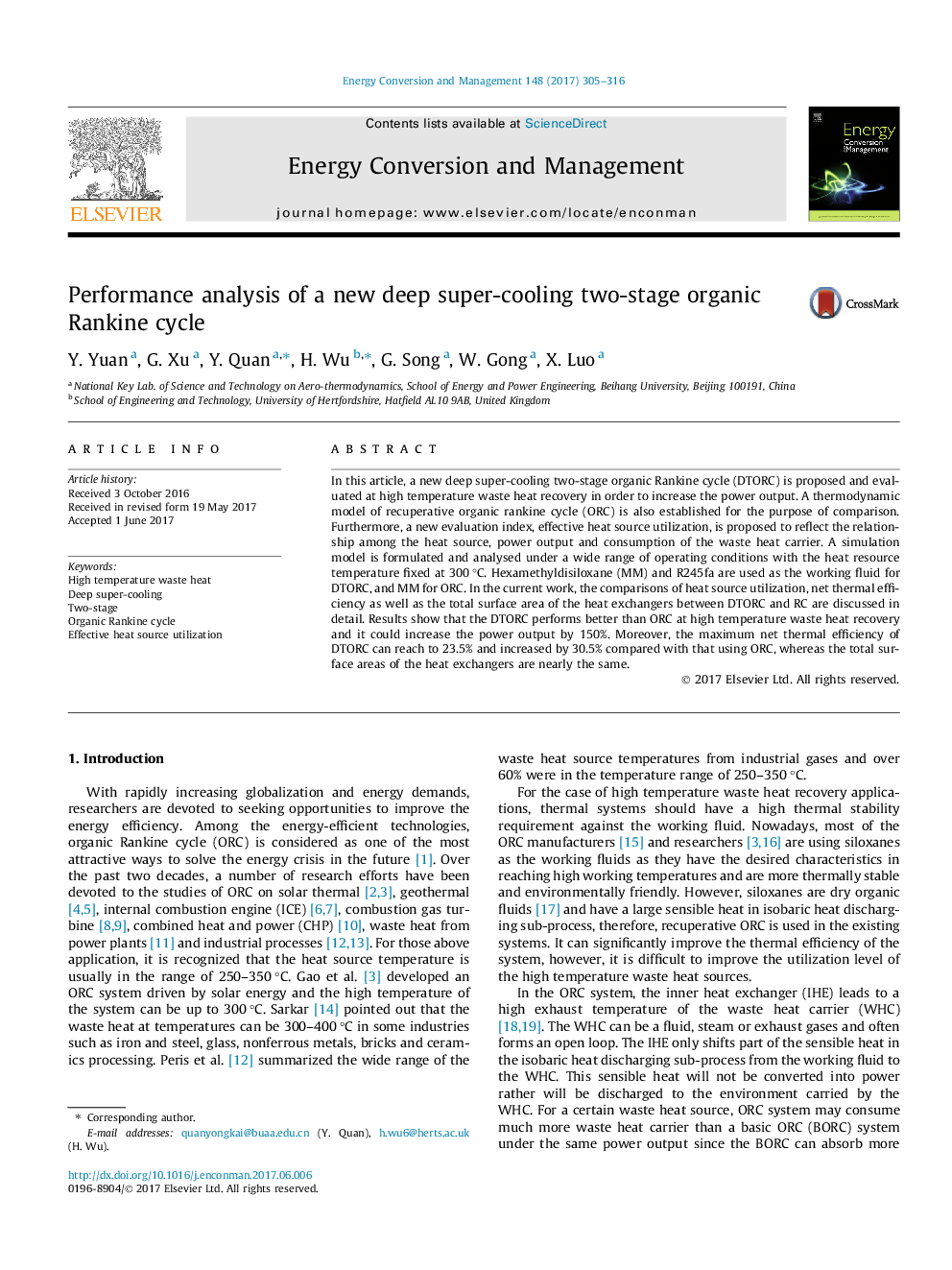| Article ID | Journal | Published Year | Pages | File Type |
|---|---|---|---|---|
| 5012529 | Energy Conversion and Management | 2017 | 12 Pages |
Abstract
In this article, a new deep super-cooling two-stage organic Rankine cycle (DTORC) is proposed and evaluated at high temperature waste heat recovery in order to increase the power output. A thermodynamic model of recuperative organic rankine cycle (ORC) is also established for the purpose of comparison. Furthermore, a new evaluation index, effective heat source utilization, is proposed to reflect the relationship among the heat source, power output and consumption of the waste heat carrier. A simulation model is formulated and analysed under a wide range of operating conditions with the heat resource temperature fixed at 300 °C. Hexamethyldisiloxane (MM) and R245fa are used as the working fluid for DTORC, and MM for ORC. In the current work, the comparisons of heat source utilization, net thermal efficiency as well as the total surface area of the heat exchangers between DTORC and RC are discussed in detail. Results show that the DTORC performs better than ORC at high temperature waste heat recovery and it could increase the power output by 150%. Moreover, the maximum net thermal efficiency of DTORC can reach to 23.5% and increased by 30.5% compared with that using ORC, whereas the total surface areas of the heat exchangers are nearly the same.
Keywords
Related Topics
Physical Sciences and Engineering
Energy
Energy (General)
Authors
Y. Yuan, G. Xu, Y. Quan, H. Wu, G. Song, W. Gong, X. Luo,
